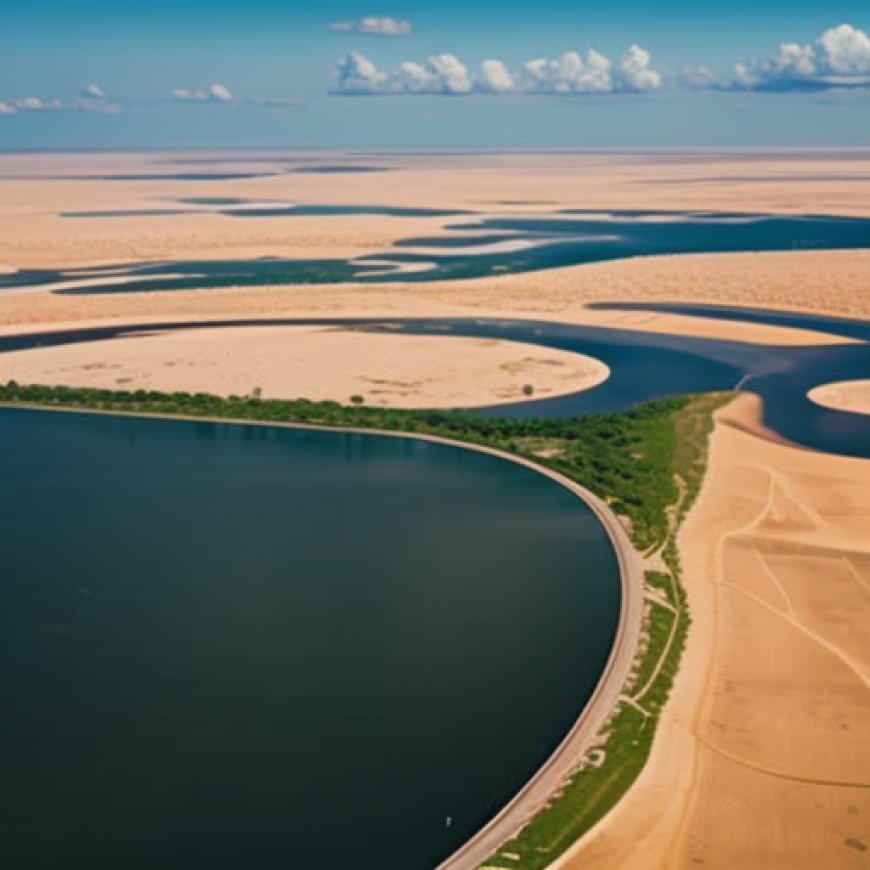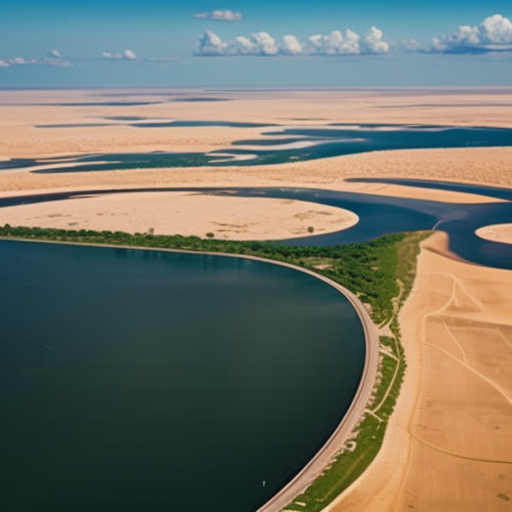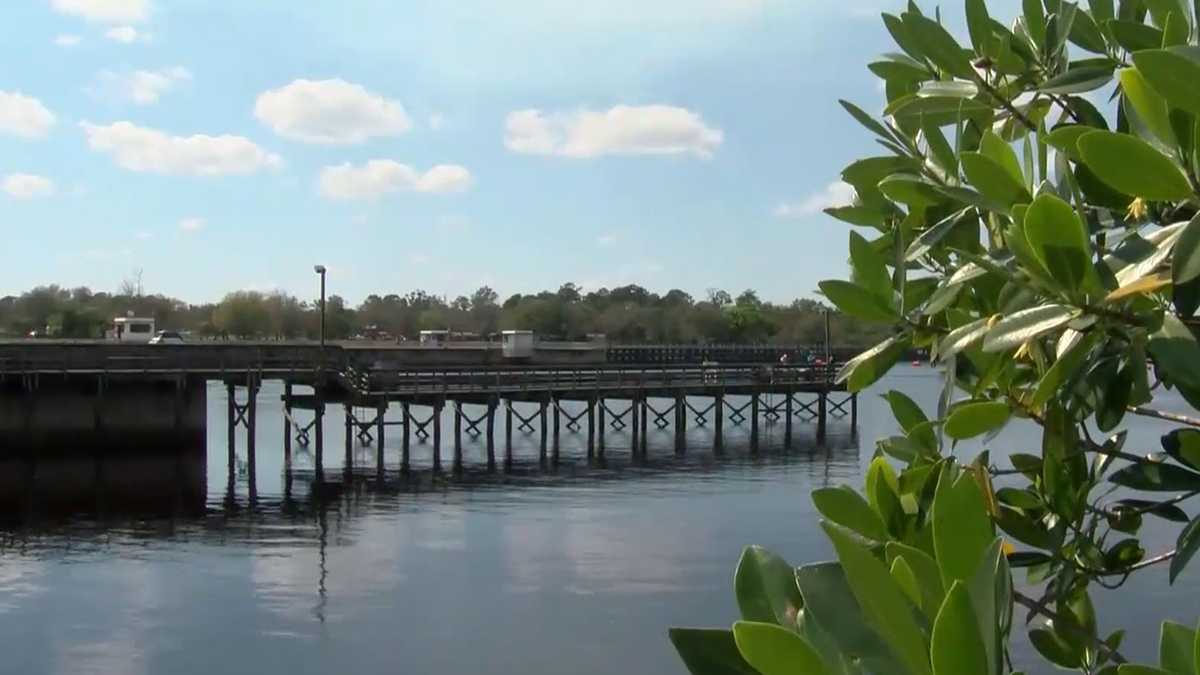Lake Okeechobee releases start back up amid dry season
Lake Okeechobee releases start back up amid dry season NBC2 News


The Army Corps of Engineers Announces Lake Okeechobee Water Releases

The Army Corps of Engineers has announced that Lake Okeechobee water releases will resume on Saturday. This proactive approach is being taken ahead of the remainder of the dry season, and Captains for Clean Water have expressed their support for the plan.
Weekly Schedule Release
The new weekly schedule release will involve a flow rate of 2,000 cubic feet per second (cfs), which is equivalent to more than 14,900 gallons per second flowing into the Caloosahatchee River.
Benefits of the Water Releases
Daniel Andrews, with Captains for Clean Water, explains how these water releases will help in achieving the Sustainable Development Goals (SDGs).
- Lowering Lake Okeechobee: The water releases will help lower the water level in Lake Okeechobee, reducing the chances of high-volume discharges later in the year.
- Optimal Flow for the Caloosahatchee River: The release of 2,000 cfs is considered the optimal flow for the Caloosahatchee River during the dry season. Any flow rate lower or higher than this is detrimental.
- Preventing Toxic Algae Blooms: By providing water in the dry season, the plan aims to prevent toxic algae blooms in the summer. This has been a long-standing goal for Captains for Clean Water, who have been advocating for this approach.
- Maintaining Salinity Levels: The water from Lake Okeechobee helps maintain salinity levels in the Caloosahatchee River, which is crucial for the thriving of grasses and other aquatic life.
Importance of Education and Community Engagement
This development is good news for our waterways. Daniel Andrews emphasizes the importance of education and community engagement in achieving the SDGs.
- Stay Engaged: People need to stay informed and engaged with what is happening regarding water releases and conservation efforts.
- Awareness: It is crucial to be aware of the impact of these releases on the environment and the community.
- Community Conversations: Having conversations with the community about water conservation and restoration efforts can help raise awareness and encourage collective action.
- Advocacy: Continuing to push the Army Corps of Engineers to maintain the pace of Everglades restoration is essential for long-term sustainability.
By prioritizing the Sustainable Development Goals (SDGs) and implementing proactive measures like these water releases, we can work towards a more sustainable future for our waterways and ecosystems.
SDGs, Targets, and Indicators
| SDGs | Targets | Indicators |
|---|---|---|
| SDG 6: Clean Water and Sanitation | Target 6.4: By 2030, substantially increase water-use efficiency across all sectors and ensure sustainable withdrawals and supply of freshwater to address water scarcity and substantially reduce the number of people suffering from water scarcity | Indicator 6.4.2: Level of water stress: freshwater withdrawal as a proportion of available freshwater resources |
| SDG 14: Life Below Water | Target 14.1: By 2025, prevent and significantly reduce marine pollution of all kinds, in particular from land-based activities, including marine debris and nutrient pollution | Indicator 14.1.1: Index of coastal eutrophication and floating plastic debris density |
| SDG 15: Life on Land | Target 15.1: By 2020, ensure the conservation, restoration, and sustainable use of terrestrial and inland freshwater ecosystems and their services, in particular forests, wetlands, mountains, and drylands, in line with obligations under international agreements | Indicator 15.1.1: Forest area as a proportion of total land area |
1. Which SDGs are addressed or connected to the issues highlighted in the article?
SDG 6: Clean Water and Sanitation
The article discusses the water releases from Lake Okeechobee into the Caloosahatchee River. This is relevant to SDG 6, which aims to ensure availability and sustainable management of water and sanitation for all.
SDG 14: Life Below Water
The article mentions the importance of water flow from Lake Okeechobee in maintaining salinity levels and helping grasses thrive in the Caloosahatchee River. This connects to SDG 14, which focuses on the conservation and sustainable use of oceans, seas, and marine resources.
SDG 15: Life on Land
The article highlights how the water releases from Lake Okeechobee help make room in the lake ahead of the rainy season. This is relevant to SDG 15, which aims to protect, restore, and promote sustainable use of terrestrial ecosystems.
2. What specific targets under those SDGs can be identified based on the article’s content?
Target 6.4: By 2030, substantially increase water-use efficiency across all sectors and ensure sustainable withdrawals and supply of freshwater to address water scarcity and substantially reduce the number of people suffering from water scarcity.
The article discusses the release of water from Lake Okeechobee into the Caloosahatchee River, which helps lower the lake’s water level and prevent high-volume discharges later in the year. This aligns with the target of ensuring sustainable withdrawals and supply of freshwater.
Target 14.1: By 2025, prevent and significantly reduce marine pollution of all kinds, in particular from land-based activities, including marine debris and nutrient pollution.
The article does not directly address this target.
Target 15.1: By 2020, ensure the conservation, restoration, and sustainable use of terrestrial and inland freshwater ecosystems and their services, in particular forests, wetlands, mountains, and drylands, in line with obligations under international agreements.
The article mentions how the water releases from Lake Okeechobee help maintain salinity levels and support the thriving of grasses in the Caloosahatchee River. This aligns with the target of ensuring the sustainable use of freshwater ecosystems.
3. Are there any indicators mentioned or implied in the article that can be used to measure progress towards the identified targets?
Indicator 6.4.2: Level of water stress: freshwater withdrawal as a proportion of available freshwater resources
The article mentions the release of water from Lake Okeechobee into the Caloosahatchee River, which can be considered as a freshwater withdrawal. This can be used as an indicator to measure progress towards Target 6.4.
Indicator 14.1.1: Index of coastal eutrophication and floating plastic debris density
The article does not mention any indicators related to marine pollution.
Indicator 15.1.1: Forest area as a proportion of total land area
The article does not mention any indicators related to terrestrial ecosystems.
4. Table: SDGs, Targets, and Indicators
| SDGs | Targets | Indicators |
|---|---|---|
| SDG 6: Clean Water and Sanitation | Target 6.4: By 2030, substantially increase water-use efficiency across all sectors and ensure sustainable withdrawals and supply of freshwater to address water scarcity and substantially reduce the number of people suffering from water scarcity | Indicator 6.4.2: Level of water stress: freshwater withdrawal as a proportion of available freshwater resources |
| SDG 14: Life Below Water | Target 14.1: By 2025, prevent and significantly reduce marine pollution of all kinds, in particular from land-based activities, including marine debris and nutrient pollution | Indicator 14.1.1: Index of coastal eutrophication and floating plastic debris density |
| SDG 15: Life on Land | Target 15.1: By 2020, ensure the conservation, restoration, and sustainable use of terrestrial and inland freshwater ecosystems and their services, in particular forests, wetlands, mountains, and drylands, in line with obligations under international agreements | Indicator 15.1.1: Forest area as a proportion of total land area |
Behold! This splendid article springs forth from the wellspring of knowledge, shaped by a wondrous proprietary AI technology that delved into a vast ocean of data, illuminating the path towards the Sustainable Development Goals. Remember that all rights are reserved by SDG Investors LLC, empowering us to champion progress together.
Source: nbc-2.com

Join us, as fellow seekers of change, on a transformative journey at https://sdgtalks.ai/welcome, where you can become a member and actively contribute to shaping a brighter future.







